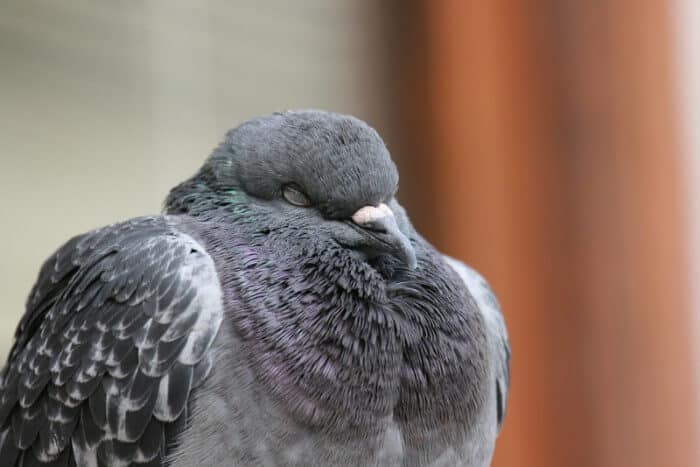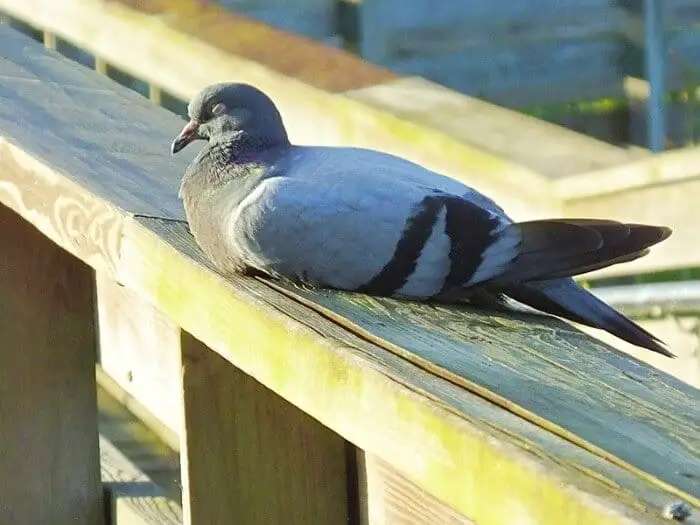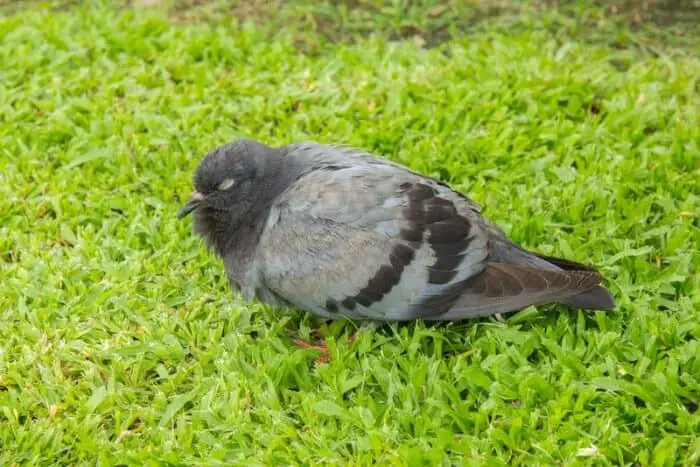Pigeons sleep anywhere that is convenient.
Pigeons are diurnal birds, that is, they are active only during daylight hours. The reason for this is that have poor night vision, so for them, flying at night is dangerous. So they sleep during the night.

Pigeons sleep by tucking their heads into their neck/wing feathers.
Do Pigeons Sleep in Their Nests?
You would think that pigeons, because they are nesting birds, would return home to their nests at night, but that isn’t the case.
Pigeons use their nests only during the mating season.
Once their fledglings have grown and left, the nest is abandoned.
The same pair will return to it time after time, but only to lay eggs and rear their young.
It may be different for captive birds kept in cages, lofts or coops, as they have no other choice, but it isn’t the same for wild birds.
So, where do they sleep?
Where do pigeons sleep?
Pigeons will sleep (or roost) in any convenient place.
Unlike their nesting spots that can be in quite exposed places, pigeons will look for niches and crannies where they can shelter for the night.

Obviously, the urbanites will chose man-made structures and their rural cousins’ trees.
Wood pigeons will tuck themselves the angle of a trunk and branch, high up, hoping to gain residual heat from the wood.
There are two reasons for this; safety and shelter from inclement weather.
How exactly do they sleep?
We have all seen pigeons doing is commonly called ‘roosting’ on ledges around the city.
But are they actually sleeping or just resting?
Pigeons often take short sleeps, or power naps, during the day.
They do this by tucking their heads into their neck/wing feathers. It looks odd because their heads seem twisted, but their necks have the flexibility to do this.
Most pigeons and doves sleep in this manner, unlike most other birds.

When they do this they aren’t entirely asleep. Half asleep would be the best description.
Pigeons have the ability to literally ‘sleep with one eye open’.
Their brains are split into two hemispheres and control either side of their bodies.
One half of their brain can shut down and sleep, while the other remains alert, literally keeping one eye open.
This is called unihemispheric slow-wave sleep – USW. It is a survival mechanism.
Another ability that pigeons have is that they never suffer from sleep deprivation.
To make up for lost sleep they can sleep deeper without sleeping longer, when necessary.
Pigeons can also anchor themselves to perch such as a branch while they sleep, because they have a flexor tendon, an automatic gripping reflex so their claws hold on until they wake.
Now you know that if you see a pigeon that isn’t moving, with its head tucked into its body, it is probably taking a power nap and is still much more aware of its surroundings than you may think.
